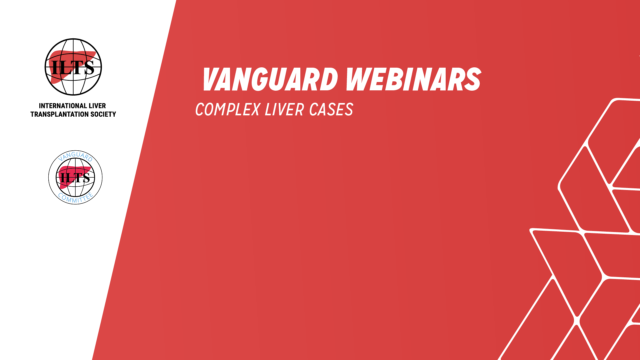Invitation to participate in WHO Global Survey of severe acute hepatitis of unknown aetiology in children
Completion deadline by July 25, 2022.
Dear Pediatric Transplant Specialists,
As part of our partnership and collaboration with WHO, ILTS is pleased to distribute the survey to designated pediatric hepatology/gastroenterology contacts (and their alternates) in your regional network of pediatric transplant centers and pediatric intensive care/liver failure units.
The objectives of the survey are to identify countries/regions with and without an exceedance in recent cases (≤16 years) of severe unexplained acute hepatitis (number of cases in 2022 compared to 2017-2021), and to assess changes in the age distribution and severity of cases over time.
Section B is dedicated to collecting pediatric liver transplant cases (2017-2022). We call for your input as experts in the field to capture the true baseline of all pediatric liver transplants (for known and unknown underlying causes) and to evaluate whether there has been a recent increase in liver transplants, or whether it is consistent with previous rates. This section will take approximately 10 minutes to complete (excluding data collection).
Section C: Cases of severe acute hepatitis of unknown aetiology (with and without acute liver failure) (2017-2022). Data on number of cases in children for each year (2017 to 2022) stratified by age (0 – <5 years,5 – <10 year, 10 – ≤16 years) that meet as closely as possible the case definitions described in the box below. We recommend to collect data either from the hospital / facility or unit patient database records or to use the attached ECDC protocol for data extraction using ICD-9 and ICD-10 codes.
Below is an introduction to the global survey – please review carefully.
Here is a pdf summary of the questions covered in the online survey, and also a protocol if you wish to use ICD-9 and ICD-10 codes related to identifying hepatitis of unknown aetiology.
Completion deadline within 14 days by Monday 25th July 2022 (exceptional extension to 30th July please contact – hepatitissurvey@who.int)
>> Online Survey Link: https://extranet.who.int/dataformv3/index.php/341828?lang=en
Global survey of severe acute hepatitis of unknown aetiology among children from 2017 – 2022
Following reports of more than 1000 cases of severe acute hepatitis of unknown aetiology in children from 35 countries across five WHO regions, the World Health Organization (WHO) is conducting a global survey among paediatric hepatologists and other specialist paediatricians working in major national units, in order to better understand the incidence of severe acute hepatitis of unknown aetiology* in children in 2022 in comparison with the previous five years (2017-2021). The survey will collect only anonymized aggregated data and is considered a key part of the WHO outbreak investigation activities.
The specific objectives of the survey are:
- To identify countries with and without an exceedance in recent cases (number of cases in 2022 compared to 2017-2021) of severe acute hepatitis of unknown aetiology* (with or without acute liver failure) in children (≤16 years), including those requiring liver transplantation;
- To assess any changes in the age distribution and severity of reported cases over time.
Key guidance for survey completion
Who should complete? If you are a physician or other health professional working in the field of paediatric hepatology, and are able to report on behalf of your hospital / facility, please fill in this online survey as comprehensively and accurately as possible working with other colleagues as appropriate. If you received this survey but this is not your area of expertise, please share this WHO survey request with a colleague who may be able to respond on behalf of your hospital / facility.
Key survey sections:
- Section A: Background information about your hospital / facility and its key services and your role.
- Section B: Cases of paediatric liver transplants (2017-2022). For hospitals / facilities that also have a paediatric liver transplantation service, we are seeking aggregated data on the number of liver transplants in children stratified by age (0 – <5 years, 5 – <10 year, 10 – ≤16 years) for each year (2017 to 2022). Liver transplants in children are a relatively rare but highly significant event, and a measure least likely to be subject to reporting/surveillance bias. An important additional survey objective is to capture the true baseline of all paediatric liver transplants (for both known and unknown underlying causes) and evaluate whether there has been a recent increase in liver transplants, or is consistent with previous rates.
- Section C: Cases of severe acute hepatitis of unknown aetiology (with and without acute liver failure) (2017-2022). Data on number of cases in children for each year (2017 to 2022) stratified by age (0 – <5 years,5 – <10 year, 10 – ≤16 years) that meet as closely as possible the case definitions described in the box below. We recommend to collect data either from the hospital / facility or unit patient database records or to use the attached ECDC protocol for data extraction using ICD-9 and ICD-10 codes.
- Section D: Diagnostic work-up practices and referral patterns (2017-2022). General information regarding your hospital / facility diagnostic work-up practices and referral patterns, and any changes in these over the last five years.
The questionnaire has 33 questions (if applicable) across the four sections, and will take approximately 10-15 minutes to complete (excluding data collection). Answers to questions are saved and you can resume the survey later with the personal survey url received after registration. If you encounter technical issues, please copy the link into an alternative web browser or try using to register with an alternative email address.
You can contact us via hepatitissurvey@who.int
By submitting your answers, you agree that WHO may use your centre’s aggregated data to support regional and global analyses of this event, and inform the ongoing investigation of this public health emergency event.
*It is recognized that categorization into known / unknown aetiology will vary depending on the diagnostic capacity and available testing at your hospital / facility.
CASE DEFINITIONS
For hospitals / facilities with paediatric intensive care and/or acute liver failure units or general hospitals / facilities caring for children with severe acute hepatitis:
Severe acute hepatitis probable (without acute liver failure): A person who is 16 years or younger, presenting with severe acute hepatitis of unknown aetiology* (i.e serum transaminases >500 IU/L (AST or ALT), without acute liver failure (INR < 2.0), and for which hepatitis virus A, B, C and E have been excluded.
Severe acute hepatitis probable (with acute liver failure): A person who is 16 years or younger, presenting with severe acute hepatitis of unknown aetiology* (i.e serum transaminases >500 IU/L (AST or ALT), with acute liver failure (INR > 2.0), and for which hepatitis virus A, B, C and E have been excluded.
For hospitals / facilities with liver transplantation units:
Liver transplant recipient for severe acute hepatitis of known and unknown aetiology: person who is 16 years or younger who received a liver transplant for either a known underlying aetiology* (e.g. viral, autoimmune disease, inherited metabolic disorders, medications, toxins, other) or unknown aetiology.
*It is recognized that categorization into known / unknown aetiology will vary depending on the diagnostic capacity and available testing at your hospital / facility, and that hepatitis E testing may not have been available at your site. Please report these cases even in the absence of hepatitis E testing.







